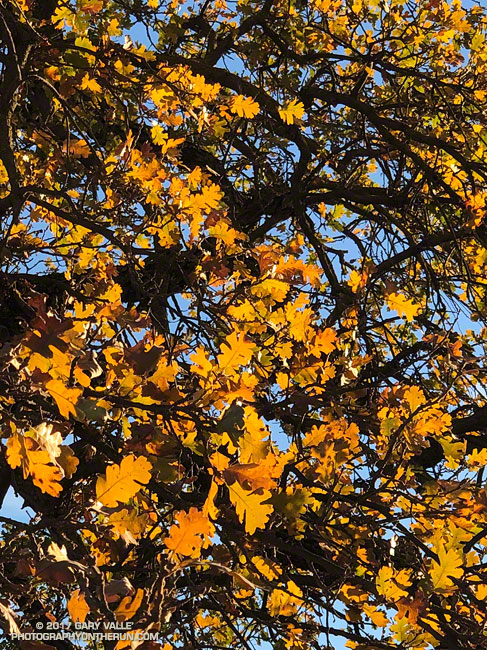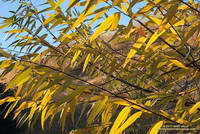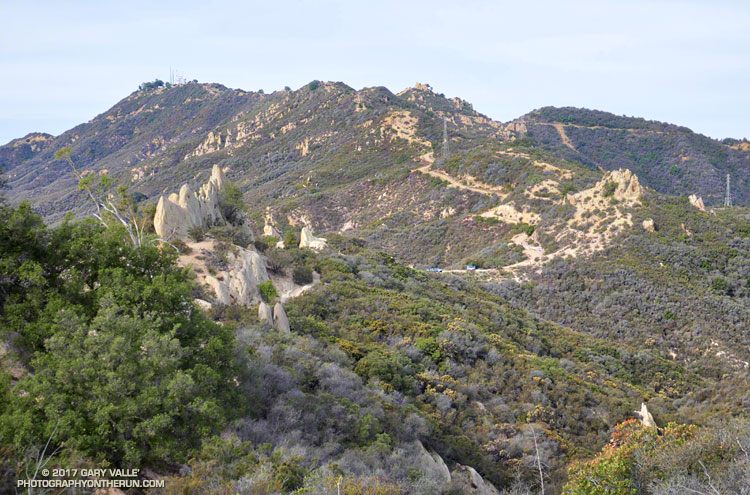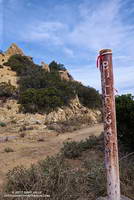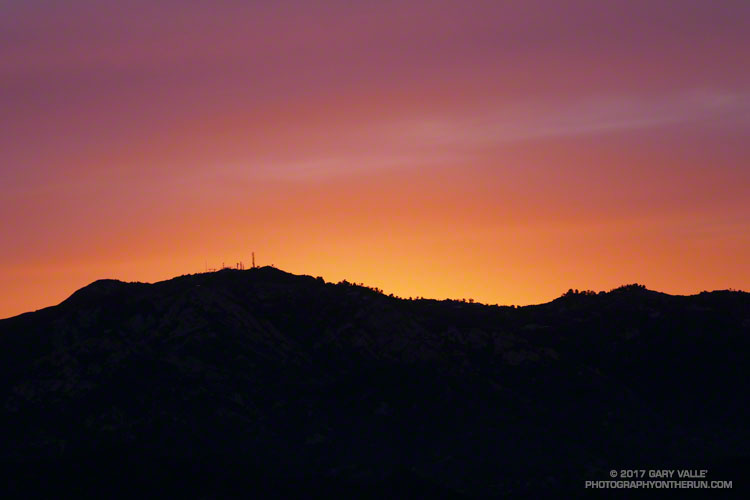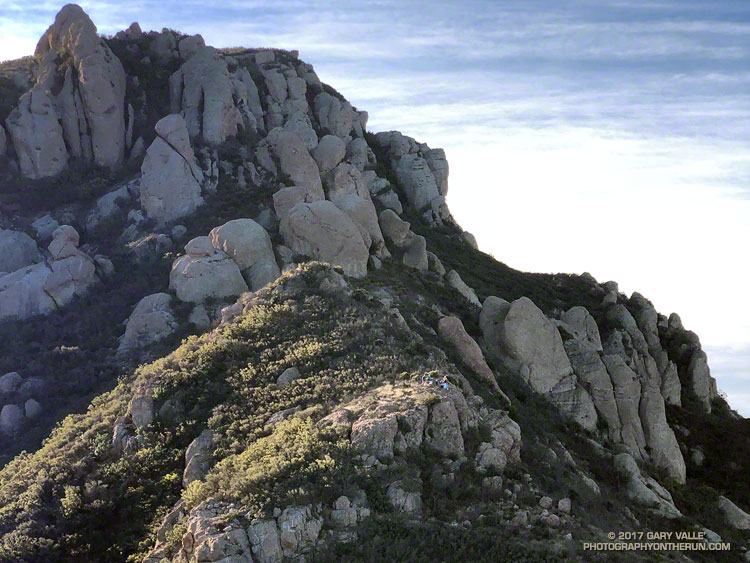
The last day of 2017 had been a near perfect day for a trail run. I’d started my adventure with an ascent of Boney Mountain’s western ridge, joining the Trail Runners Club for part of the climb. After reaching the top of Boney Mountain’s western ridge, I continued to Tri Peaks and Sandstone Peak, the highest peak in the Santa Monica Mountains. From Sandstone Peak, a few scenic miles were added by completing the Mishe Mokwa loop. This brought me back to the Chamberlain segment of the Backbone Trail, headed west.
About a half-mile past the Backbone Trail’s western junction with the Tri Peaks Trail, the Backbone Trail begins a 4.7 mile, 2400′ descent to Sycamore Canyon. I had started this descent and was nearly down to Chamberlain Rock, when I heard voices on the trail ahead. They sounded like they were just around the next switchback. Slowing to a walk, I rounded the sharp corner. Three smiling hikers said hello, and I wished them a Happy New Year.
It’s a little unusual to see a group of hikers on this section and for a moment I wondered if they might be doing the full length of the 68 mile Backbone Trail. I asked how they were doing and one of them casually replied, “Doing great — we’re just headed down to the Sandstone Peak parking lot…”
Surprised by the answer, I asked, “The trailhead on Yerba Buena?” They were miles from where they thought they were and headed in the opposite direction they should be. Every step down the trail was taking them farther and farther away from their intended destination. They looked fit, experienced and well-prepared, but somewhere along the way, they had taken a very wrong turn.
From what I could determine they had intended to do the Mishe Mokwa – Sandstone Peak loop counterclockwise, or a variation that involved Tri Peaks. Apparently, at the top of the Mishe Mokwa Trail instead of continuing toward Sandstone Peak on the Backbone Trail, the hikers decided to take the Tri Peaks Trail. They followed the Tri Peaks Trail until it ended at the Chamberlain/Backbone Trail, about two miles west of Sandstone Peak.
At this point, to get back to Sandstone Peak (and their car), they needed to turn left (east). Instead, they turned right and headed down the Chamberlain Trail. One of the three hikers suspected they had gone in the wrong direction, but wasn’t able to convince the others.
The good news is they only had gone about a mile down Chamberlain from the Tri Peaks Trail junction. This put them about 2.5 miles from Sandstone Peak and about 4 miles from their car. It was around noon and the weather was good. If they had no route-finding issues on the way back they would probably still have time to do Sandstone Peak. They just would be doing more of an End of the Year adventure than they planned.
Here are a few photos taken along the way.
Some related posts: Boney Mountain Western Ridge & Loop, Balance Rock, Misplaced on Mt. Wilson

